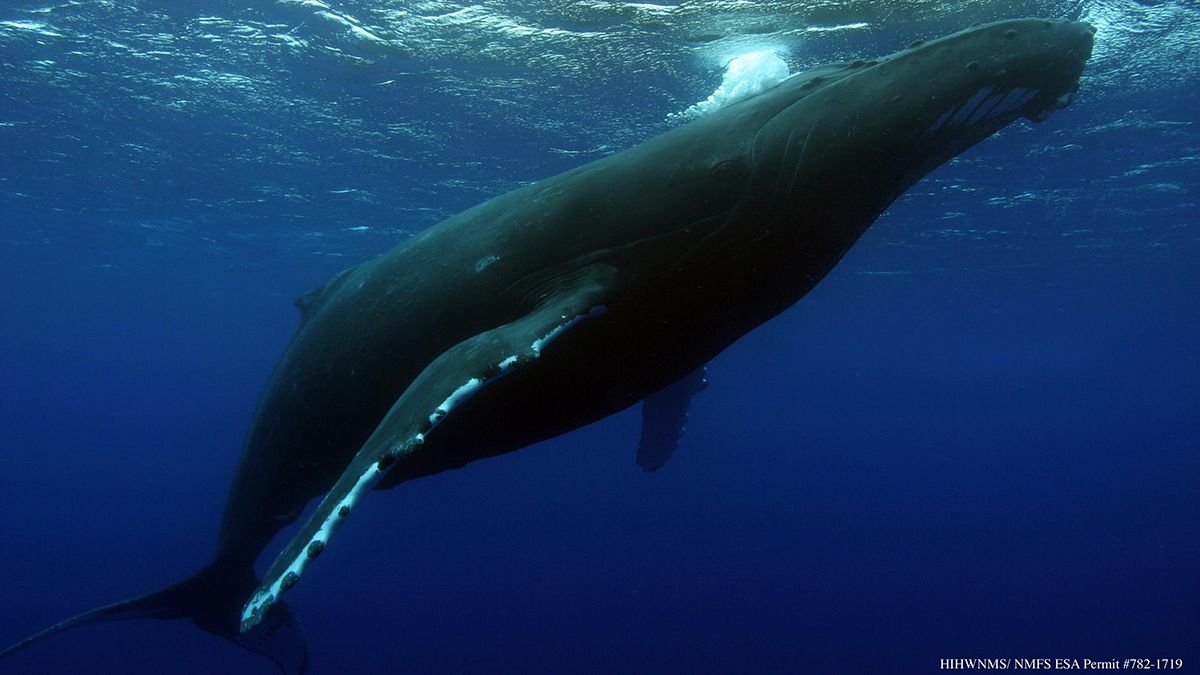Humpback whales migrate each year to Hawaii to mate, give birth and raise their calves. This could one day end because of climate change and rising greenhouse gases causing rising ocean temperatures, according to a paper published in Frontiers in Marine Science.
The paper was written by a team of researchers that include three University of Hawaii at Manoa graduate students — Hannah von Hammerstein and Renee Setter from the Department of Geography and Environment in the College of Social Sciences, and Martin van Aswegen from the Marine Mammal Research Program in the Hawaii Institute for Marine Biology.
Humpback whales feed on krill, plankton and small fish in the cool waters of Alaska, British Columbia and eastern Russia during summer, according to the NOAA. Once temperatures begin to drop as winter approaches, their food source dwindles. The whales then migrate nearly 3,000 miles to warmer breeding grounds in waters surrounding Hawaii, Asia, Central America and Mexico. Once there, the whales do not eat and focus on nurturing their young.
Sea surface temperatures in these areas range between 21 to 28 degrees Celsius (approximately 70-82 degrees Fahrenheit). According to von Hammerstein, Setter, van Aswegen and co-researchers from Maui’s Pacific Whale Foundation, anthropogenic (human-induced) climate change is warming the oceans at “unprecedented rates.” Should this continue, researchers foresee breeding grounds heating past the 21-28 degree Celsius range over the next century.
Researchers incorporated a statistical “delta downscaling” method to come up with two plausible scenarios:
- The worst-case scenario is 67% of humpback whale breeding grounds surpassing the critical sea surface temperature of 28 degrees Celsius by 2100, if unabated carbon emissions continue.
- A “middle-of-the-road” scenario shows the number falling to 35% of breeding grounds if international institutions work toward emission mitigation goals.
“We expected to see critical warming in some of the breeding grounds, but the number of critically affected areas was a surprise,” said von Hammerstein in a UH Manoa release. “While the results of the study are daunting, they also highlight the differences between the two emission scenarios and what still can be won by implementing emission mitigation measures.”
Setter added, “It’s really crucial that we try to reduce our greenhouse gas emissions and really try to stay on that ‘middle-of-the-ground’ greenhouse gas emissions scenario at the very least, just so that we can save as many of those breeding grounds as possible from surpassing that critical temperature threshold.”
Researchers noted that it’s currently not known whether humpback whales will continue to migrate to breeding grounds above 28 degrees Celsius. However, they hope their findings are an incentive to policymakers to reduce emissions in Hawaii, as well as on an international level.
“Our findings provide yet another example of what is to come with anthropogenic climate change, with humpback whales representing merely one impacted species,” said van Aswegen. “Improving our understanding of how ecosystems are going to change is critical and timely implementation of mitigative measures.”
Sarah Yamanaka is a digital journalist for Spectrum News Hawaii. Read more of her stories here.



